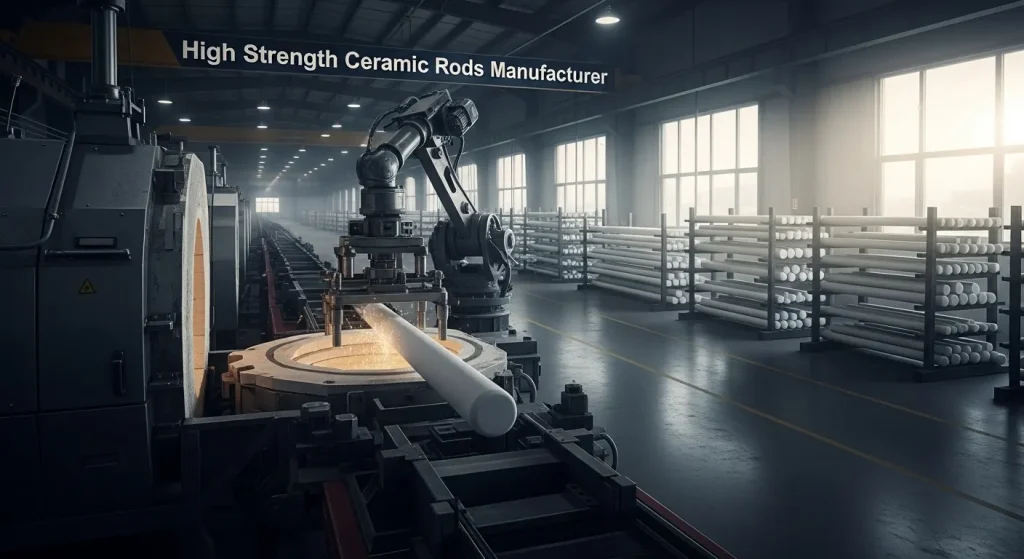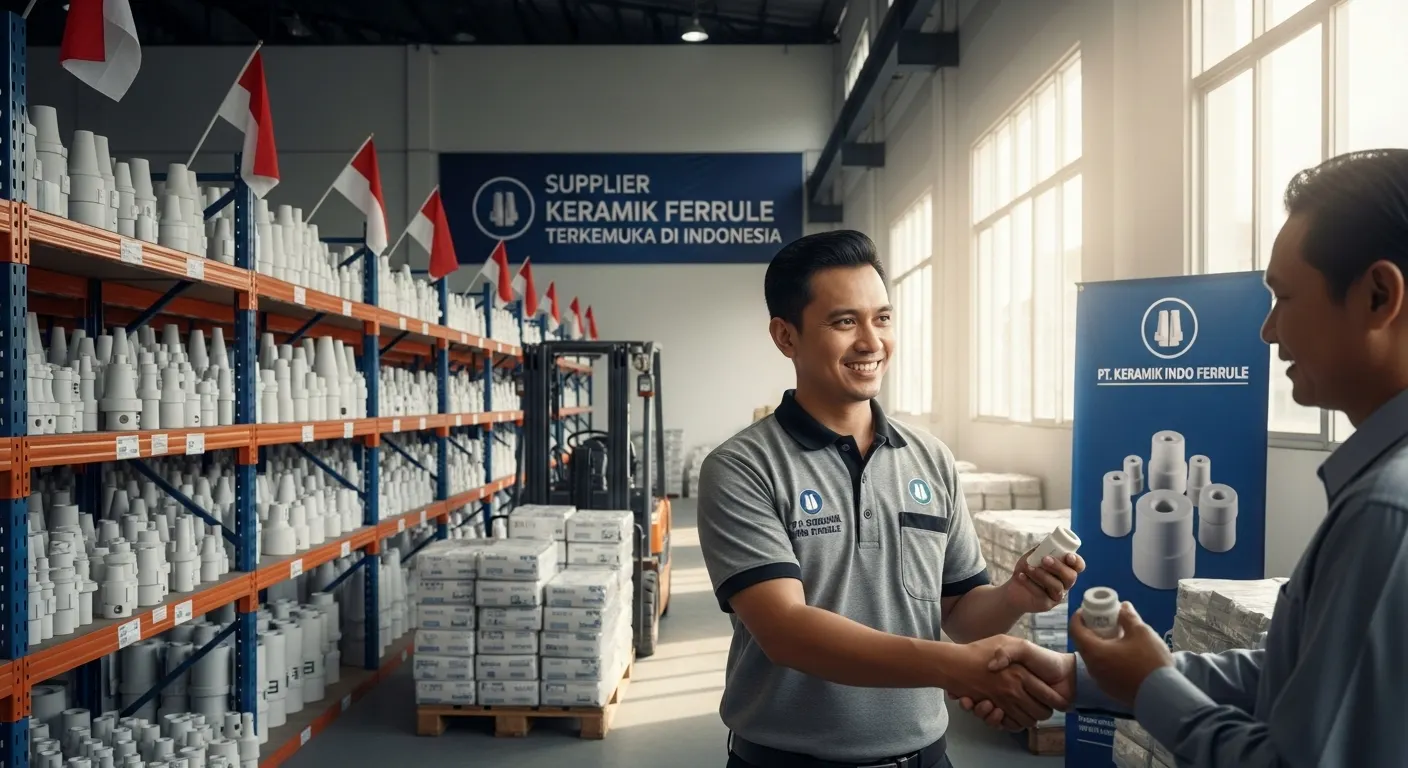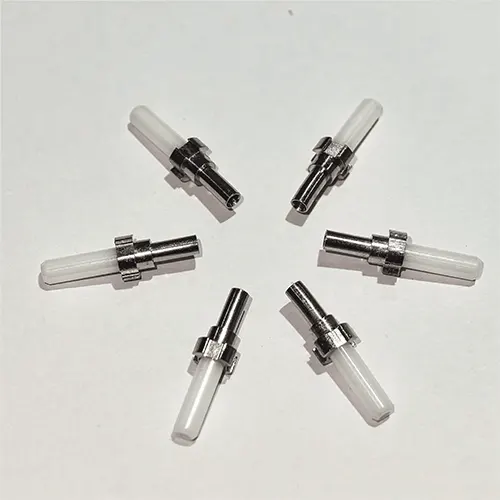High Strength Ceramic Rods Manufacturer: A Sourcing Guide
Finding a high strength ceramic rods manufacturer is the first step in solving complex engineering challenges that metals, polymers, and glass cannot. These advanced components are not simple parts. They are precision-engineered tools designed to perform in the most extreme industrial environments. Where metal bends, corrodes, or conducts, and where plastic melts or wears, a ceramic rod holds its ground.

This guide is for engineers, designers, and procurement managers. We will explore what "high strength" truly means in the world of ceramics. We will compare the critical materials you must choose from. Most importantly, we will provide a clear framework for how to find and vet a manufacturer who can deliver the quality and precision your application demands.
What Are High Strength Ceramic Rods?
A high strength ceramic rod is an industrial component made from advanced technical ceramics, such as Alumina or Zirconia. It is engineered to withstand extreme forces that would cause most other materials to fail.
What is a high strength ceramic rod used for?
High strength ceramic rods are used in applications requiring extreme durability. This includes pump shafts, industrial furnace supports, semiconductor processing, and medical implants. Their strength allows them to resist bending, compression, high temperatures, and severe wear, making them ideal replacements for metal in harsh environments.
These rods are part of a family of industrial ceramic rod components. Their properties go far beyond simple strength. They are also prized for:
- Extreme Hardness: They resist scratches and abrasive wear.
- Thermal Stability: They maintain their shape and strength at very high temperatures.
- Electrical Insulation: Most are excellent insulators, making them perfect for high-voltage equipment.
- Chemical Inertness: They do not rust or corrode, even when exposed to strong acids or bases.
- Dimensional Stability: They do not warp or creep under load over time.
What "High Strength" Really Means in Ceramics
When an engineer searches for "high strength," they are often looking for a solution to a specific type of failure. In the world of metals, "strength" is a simple concept. In ceramics, it is nuanced.
A manufacturer will ask you what kind of strength you need. Understanding this difference is the key to selecting the right material.
1. Compressive Strength (The "Crush" Force)
This is the material's ability to resist a force that is squeezing or crushing it. Advanced ceramics have a compressive strength that is orders of magnitude higher than metals. This is their main superpower.
- Top Material: Alumina (Aluminum Oxide)
- Common Use: A ceramic post or support that must hold a heavy load.
2. Flexural Strength (The "Bend" Force)
This is the material's ability to resist breaking when it is bent. This is a common failure point for brittle materials.
- Top Material: Zirconia (Zirconium Oxide)
- Common Use: A long, thin rod that must support a load across its center.
3. Fracture Toughness (The "No Chip" Force)
This is the most critical and misunderstood property. Fracture toughness is the material's ability to resist the propagation of a crack. A material with low toughness (like glass) will shatter from a small chip. A material with high toughness will stop the crack.
- Top Material: Zirconia ceramic rods
- Common Use: Any application with vibration, impact, or thermal shock. This is why Zirconia is nicknamed "ceramic steel." It is the toughest of all monolithic ceramics.
4. Hardness (The "No Scratch" Force)
This is the material's ability to resist abrasive wear, scratching, and surface damage.
- Top Material: Silicon Carbide (SiC)
- Common Use: Pump shafts, bearings, or nozzles that handle abrasive slurries.
The "Big Three" Materials for High Strength Rods
Your manufacturer will guide you, but your choice will almost certainly come down to three primary materials. Each has a distinct personality.
What are the strongest ceramic rod materials?
The strongest material depends on the application. Alumina (Aluminum Oxide) has one of the highest compressive strengths and is a great insulator. Zirconia (Zirconium Oxide) has the best fracture toughness, making it resistant to impact. Silicon Carbide (SiC) is one of the hardest materials on earth, making it superior for wear resistance.
1. Alumina (Aluminum Oxide, Al2O3)
Alumina is the most common and versatile advanced ceramic. It is the go-to workhorse for a huge range of applications. It is often specified by its purity (e.g., 95%, 99.5%, 99.8%).
- Key Strengths:
- Excellent compressive strength.
- Very high hardness.
- Fantastic electrical insulator.
- Good thermal stability.
- Lower cost compared to Zirconia or SiC.
- Main Weakness:
- Relatively low fracture toughness. It is more brittle and can chip.
- Best For:
- Furnace supports
- Electrical insulators
- General industrial wear parts
2. Zirconia (Zirconium Oxide, ZrO2)
Zirconia is the "ceramic steel." It is an incredible material that solves the main problem of traditional ceramics: brittleness. The most common form is Yttria-Stabilized Zirconia (Y-TZP).
- Key Strengths:
- Exceptional fracture toughness. This is its number-one benefit.
- Very high flexural strength.
- Good hardness.
- Thermal expansion similar to steel (useful for mating with metal parts).
- Biocompatible (used for medical implants).
- Main Weakness:
- Lower operating temperature than Alumina.
- Higher material cost.
- Best For:
- Pump shafts and plungers (where toughness is key)
- Medical and dental implants
- Welding pins and locating fixtures (resists impact)
- Cutting tools
3. Silicon Carbide (SiC)
Silicon Carbide is one of the hardest and most durable materials available. It is a specialist material for the most extreme wear environments.
- Key Strengths:
- Extreme hardness (near diamond-level).
- Incredible wear and abrasion resistance.
- High thermal conductivity (it removes heat well).
- Maintains strength at very high temperatures (1400°C+).
- Main Weakness:
- Very difficult to manufacture and grind, making it expensive.
- Lower fracture toughness than Zirconia.
- Best For:
- Mechanical seals and bearings
- Nozzles for sandblasting
- Semiconductor processing components
Material Comparison at a Glance
| Property | Alumina (99.5%) | Zirconia (Y-TZP) | Silicon Carbide (SiC) |
| Compressive Strength | Very High | High | Very High |
| Flexural Strength | Good | Excellent | Good |
| Fracture Toughness | Low | Excellent | Fair |
| Hardness | Very High | Very High | Extreme |
| Thermal Stability | Excellent | Good | Excellent |
| Electrical Insulator | Excellent | Yes | No (Semiconductor) |
| Cost | Low | Medium-High | High |
How Are High Strength Ceramic Rods Manufactured?
You cannot cast a ceramic rod like metal. The process is one of the most advanced in modern manufacturing. It is a journey from fine powder to a component harder than steel.
How are ceramic rods made?
Ceramic rods begin as a fine powder (like Alumina) mixed with a binder. This paste is then shaped, usually by extrusion, to form a "green" rod. This soft part is then fired at extreme temperatures in a furnace, or "sintered." Sintering fuses the particles, making the rod incredibly hard and dense. Finally, it is precision-ground with diamond tools to the exact final diameter.
Step 1: Raw Material Preparation
The process starts with ultra-pure, nano-scale ceramic powder. The quality and consistency of this powder dictate the final strength of the part. A manufacturer mixes this powder with proprietary binders and plasticizers to create a feedstock.
Step 2: Forming the "Green" Rod
The feedstock is shaped into the basic rod form. This "green" part is soft, chalky, and larger than the final part.
- Extrusion: This is the most common method for rods. The paste is forced through a die to create a long, continuous cylinder, which is then cut to length.
- Dry Pressing: Powder is compacted into a mold. This is good for shorter, wider "rod" shapes.
- Isostatic Pressing (CIP/HIP): Powder is put in a flexible mold and pressed from all sides by a fluid. This creates a very uniform part with excellent density, often used for the highest-performance applications.
Step 3: Sintering (The "Firing")
This is the most critical, energy-intensive, and time-consuming step. The green rods are placed in a high-temperature kiln.
- Binder Burnout: The parts are heated slowly to burn away the polymer binders.
- Sintering: The temperature is raised dramatically (often 1500°C - 1800°C). At this heat, the ceramic particles do not melt, but they fuse at their edges. The part shrinks significantly (15-25%) and becomes incredibly dense and hard.
Any mistake in this step can lead to a warped, cracked, or weak part.
Step 4: Precision Grinding (The "Finishing")
After sintering, the rod is hard, but its surface is rough and its dimensions are not exact. The final step is to machine it. Since the material is so hard, this can only be done with diamond-coated tools.
- Centerless Grinding: This is the standard method for precision rods. The rod is fed between two spinning grinding wheels, which machine it to a precise, uniform outer diameter (OD) with a very smooth surface finish.
- Cylindrical Grinding: Used to create more complex shapes, like steps or tapers.
Key Industrial Applications for High Strength Rods
These rods are problem-solvers. They are found in industries where failure is not an option.
Semiconductor Manufacturing
This industry uses ceramic rods as wafer handling arms, supports, and insulators.
- Why? The manufacturing process involves corrosive gases, high temperatures, and plasma fields. Ceramics (especially Alumina and SiC) are one of the few materials that are pure enough and strong enough to survive without contaminating the silicon wafers.
Medical and Life Sciences
Zirconia is the material of choice here.
- Why? It is biocompatible, meaning it does not react with the human body. It is also extremely strong and wear-resistant. It is used to make dental implants, joint replacement components, and high-strength surgical tools.
Industrial Machinery and Manufacturing
This is the broadest category for industrial ceramic rod components.
- Pump Shafts & Plungers: Zirconia rods are ideal for pumps handling abrasive slurries, chemicals, or food products. They do not wear, rust, or contaminate the product.
- Welding and Locating Pins: Zirconia rods are used in robotic welding cells. They are strong, non-conductive, and weld spatter does not stick to them, unlike metal pins.
- Nozzles: SiC rods are machined into nozzles for sandblasting, waterjet cutting, and chemical processing.
Aerospace and Defense
- Why? Advanced ceramics offer high strength at a low weight. They are used for armor, lightweight structural components, and parts in high-temperature engine zones.
Furnace and Thermal Processing
- Why? Alumina rods are perfect for high-temperature supports. They can hold heavy loads inside a 1500°C furnace where any metal would turn to liquid.
Sourcing 101: How to Vet a High Strength Ceramic Rod Manufacturer
The market has many "suppliers," but few true manufacturers. A distributor sells you a box. A manufacturer is an engineering partner who solves your problem. Here is how to tell them apart.
How to find a good ceramic rod manufacturer?
To find a good manufacturer, verify their in-house capabilities. A true manufacturer controls their own sintering and, most importantly, has precision diamond grinding equipment. Ask for material data sheets to verify the properties of their ceramic. A distributor, by contrast, only stocks and resells finished parts.
1. The First Question: "Are You a Manufacturer or a Distributor?"
Be direct. A distributor is a middle-man. They have no control over quality, material, or lead times. A true manufacturer controls the entire process, from powder to finished part.
2. "Show Me Your Grinding Department."
This is the real test. Any company can buy a kiln and sinter a part. The precision, cost, and quality come from the grinding.
- Ask for: Photos or a video tour of their centerless grinders and cylindrical grinders.
- Why? A company that outsources its grinding is not a high-precision manufacturer. They are a "form-and-fire" shop.
3. "Send Me Your Material Data Sheet."
Do not accept vague claims like "our Alumina is very strong."
- Ask for: A technical data sheet (TDS) for the exact material they propose (e.g., "99.5% Alumina").
- What to check: Look for the key properties: Compressive Strength (MPa), Flexural Strength (MPa), Fracture Toughness (MPa·m¹/²), and Hardness (GPa or HRA). Compare this data to industry standards.
4. "Can We Discuss Tolerances?"
A high-quality manufacturer will be happy to have this conversation.
- Standard Tolerance: For a ground rod, a standard OD tolerance might be $\pm 0.025\text{ mm}$ ($\approx \pm 0.001$ inches).
- Precision Tolerance: A high-precision tolerance might be $\pm 0.005\text{ mm}$ ($\approx \pm 0.0002$ inches).
- The Cost: Tighter tolerances require more grinding time and more skilled operators. Be ready for the price to increase as the tolerance gets tighter. Only pay for the precision you truly need.
5. Start with Prototypes
Never place a 10,000-piece order based on a drawing.
- Ask for: A small "prototype run" of 5-10 pieces.
- Test them. Put them in your machine. Try to break them. Verify they fit. This small investment can save you a fortune.
Beyond the Simple Rod: The World of Custom Machining
Many applications need more than just a smooth cylinder. This is where a custom ceramic rods manufacturer becomes essential.
Can you machine threads or holes in a ceramic rod?
Yes. A manufacturer can machine features like threads, holes, and grooves into a ceramic rod. This is ideally done when the rod is in its "green" (unfired) state. After sintering, the rod is too hard and requires specialized, and more expensive, diamond grinding to add these custom features.
A full-service manufacturer can add a huge range of features:
- Flats: For wrenches or anti-rotation.
- Grooves: For O-rings or clips.
- Threads (Internal or External): For assembly.
- Holes (Cross-Drilled): For pins or sensors.
- Tapers: For nozzle applications.
- Steps: For creating multiple diameters on a single shaft.
Working with a manufacturer who can do this in-house is far cheaper and faster than buying a rod and sending it to a separate machine shop.
The Future: Stronger, Tougher, and Clearer Ceramics
The field of ceramic engineering is not standing still. "High strength" is a moving target.
- Transparent Ceramics: Manufacturers are now able to make ceramics (like Alumina and Spinel) that are not only strong but also optically clear, like glass. This is leading to new applications in high-strength windows, military armor, and laser components.
- Ceramic Matrix Composites (CMCs): This is the next frontier. CMCs involve embedding fibers (like Silicon Carbide fibers) into a ceramic matrix. The result is a material that has the heat resistance of a ceramic but the toughness and non-brittle failure of a metal.
Your Sourcing Strategy: A Final Summary
Finding the right high strength ceramic rod manufacturer comes down to a clear, three-step process.
- Define Your Problem: What kind of strength do you need? Are you fighting being crushed (compressive), bent (flexural), or chipped (toughness)? Your answer points to your material.
- Select Your Material: Use the "Big Three" as your guide. Start with Alumina for general-propose strength, move to Zirconia for toughness, and specify SiC for extreme wear.
- Vet Your Manufacturer: Ignore the sales talk and focus on capability. A true partner has in-house diamond grinding and provides a material data sheet to prove their claims.
For a complete overview of all rod types and applications, see our full guide to ceramic rods.
In This Article
- 1 What Are High Strength Ceramic Rods?
- 2 What "High Strength" Really Means in Ceramics
- 3 The "Big Three" Materials for High Strength Rods
- 4 How Are High Strength Ceramic Rods Manufactured?
- 5 Key Industrial Applications for High Strength Rods
- 6 Sourcing 101: How to Vet a High Strength Ceramic Rod Manufacturer
- 7 Beyond the Simple Rod: The World of Custom Machining
- 8 The Future: Stronger, Tougher, and Clearer Ceramics
- 9 Your Sourcing Strategy: A Final Summary
 English
English 中文
中文





